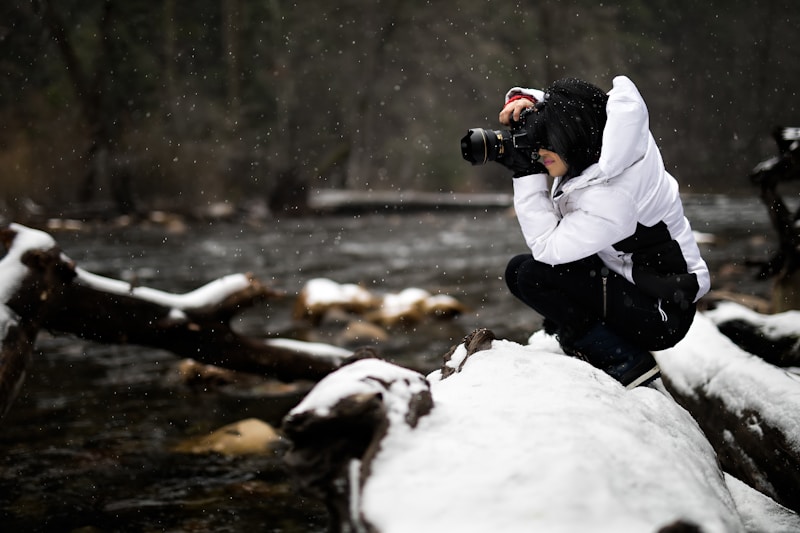Essential Photography and Videography Advice for Every Enthusiast
Essential Photography and Videography Advice for Every Enthusiast
Understanding the Basics of Photography and Videography
Photography and videography are two art forms that, while distinct, share common techniques and principles. Whether you're a budding photographer or a seasoned videographer, mastering the fundamentals can elevate your storytelling and create more engaging content. This article aims to provide insightful tips and advice related to both fields, ensuring you capture life's fleeting moments beautifully.
Key Principles of Photography
Photography involves capturing light to create images that evoke emotions, tell stories, and preserve memories. Here are some essential aspects to consider:
1. Composition Matters
Good composition is critical in photography. It refers to how elements are arranged in your frame. Popular techniques include:
- Rule of Thirds: Divide your image into three equal parts, both horizontally and vertically, and place your subject along these lines or at their intersections.
- Leading Lines: Use natural lines within the scene to draw the viewer’s eye toward the subject.
- Framing: Use elements within the scene to create a 'frame' around your subject, enhancing focus.
2. Understanding Exposure
Exposure is the amount of light that reaches your camera sensor. It is controlled by three main factors:
| Aperture | Controls how much light enters the lens. A lower f-number means a wider aperture, allowing more light to hit the sensor. |
| Shutter Speed | Determines how long the sensor is exposed to light. A faster shutter speed can freeze action, while a slower speed can create motion blur. |
| ISO | Measures the sensitivity of your camera sensor to light. Higher ISO settings can brighten images but may introduce noise. |
Essentials of Videography
Videography focuses on capturing moving images and often involves storytelling. Here are some vital tips for effective videography:
1. Stabilization Techniques
Shaky footage can distract viewers from your message. Consider using:
- Tripods: Ideal for static shots.
- Gimbals: Help smooth out camera movements, especially during motion.
- Editing Software: Stabilization tools in software can enhance shaky footage post-production.
2. Sound Quality is Crucial
Good audio is just as important as high-quality visuals. Here are suggestions to improve your sound:
- Use a good quality microphone instead of relying on the camera's built-in mic.
- Consider windshields for outdoor shooting to minimize noise from the wind.
- Monitor audio levels during recording to avoid clipping.

Advanced Tips for the Avid Photographer and Videographer
After mastering the basics, it's time to get advanced. Here are some expert advice pieces related to photography and videography:
1. Experiment with Editing
Editing is where you can let your creativity shine. Programs like Adobe Lightroom for photos and Adobe Premiere Pro for videos allow for extensive post-production manipulation. Enhance colors, adjust lighting, and correct white balance to improve your final product. Remember, less can be more—don't overdo effects.
2. Network with Other Creatives
Building connections within the creative community can lead to valuable feedback and collaboration opportunities. Join online forums, attend workshops, and connect with local photographers and videographers. Platforms like Instagram and TikTok are excellent for showcasing your work and gaining inspiration.
Common Questions About Photography and Videography
As you dive deeper into photography and videography, you may have several questions. Here are some commonly asked questions:
- Q: What camera should I start with?
A: Start with what you can afford. Many professionals recommend mirrorless or DSLR cameras due to their flexibility and ability to change lenses. - Q: How important is lighting in photography and videography?
A: Extremely important! Natural light can dramatically affect the quality of your images, so learn to maximize it or invest in artificial lighting when necessary. - Q: Should I pursue photography or videography professionally?
A: Both fields can be rewarding. Consider your interests—if you enjoy storytelling through movement, videography might be for you. If you prefer still images, focus on photography.
Conclusion and Final Thoughts
In conclusion, photography and videography are about more than just capturing images; they are about telling stories and evoking emotions. By mastering the basics, continuously learning, and networking with other creatives, you can improve your skills and craft compelling content. Remember, practice is key! Take the time to experiment, learn from mistakes, and most importantly, have fun while creating. The world of photography and videography awaits your unique perspective.
For those venturing into these exciting fields, stay patient and keep honing your craft. Each photo and video is a stepping stone to discovering your style and vision.
